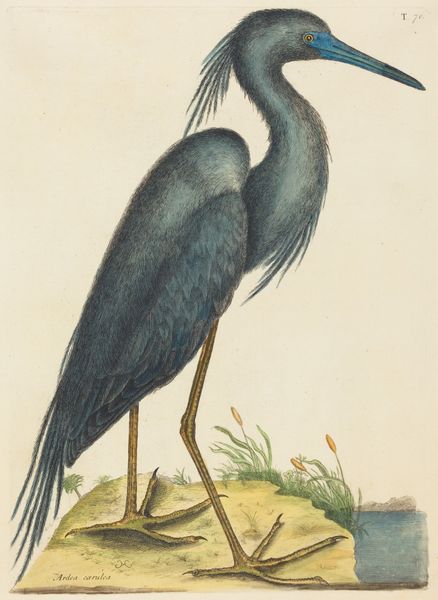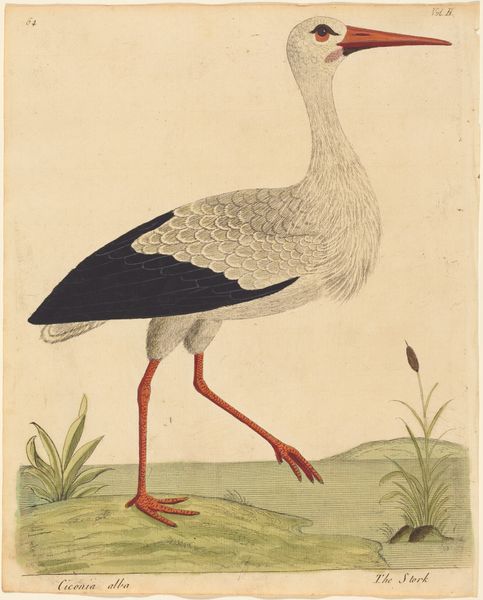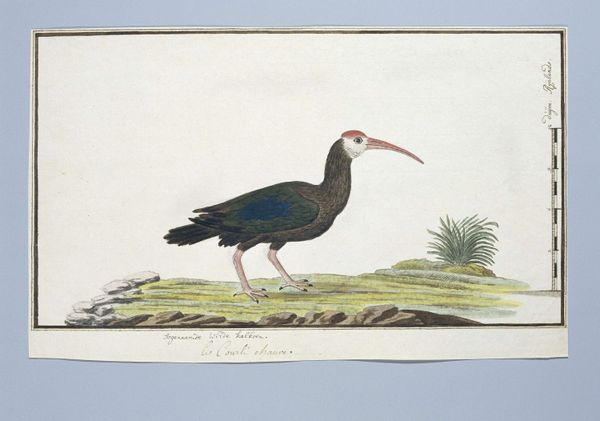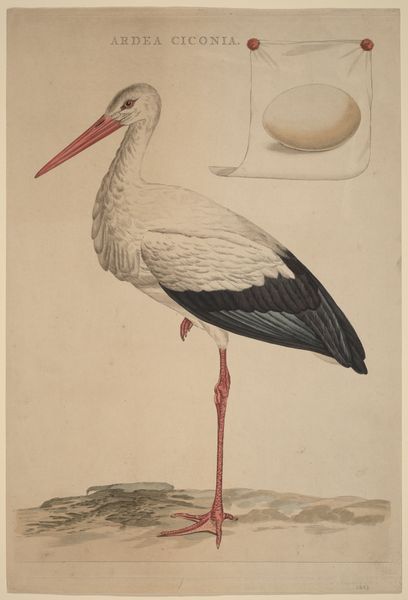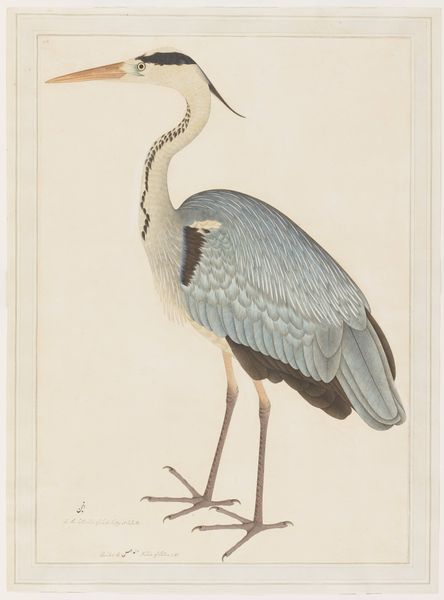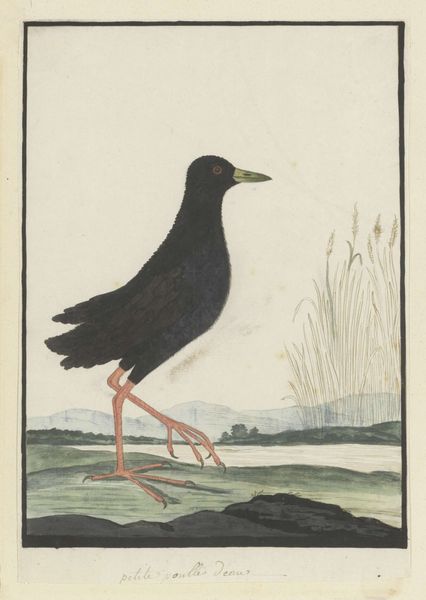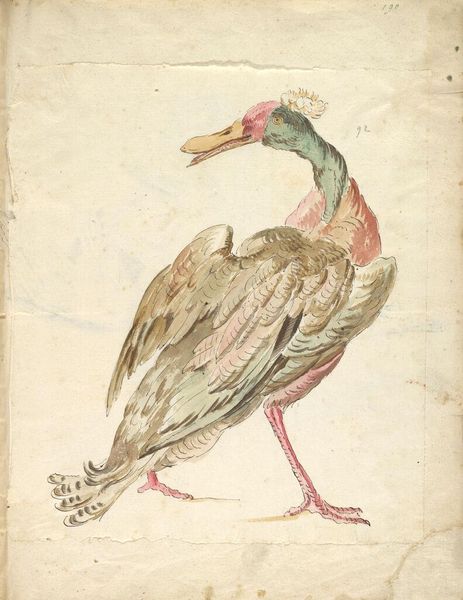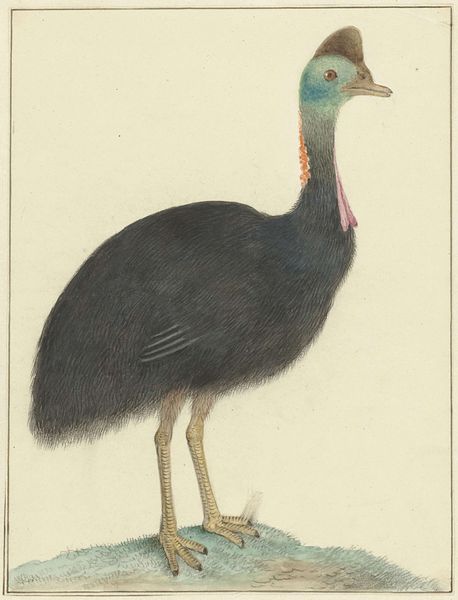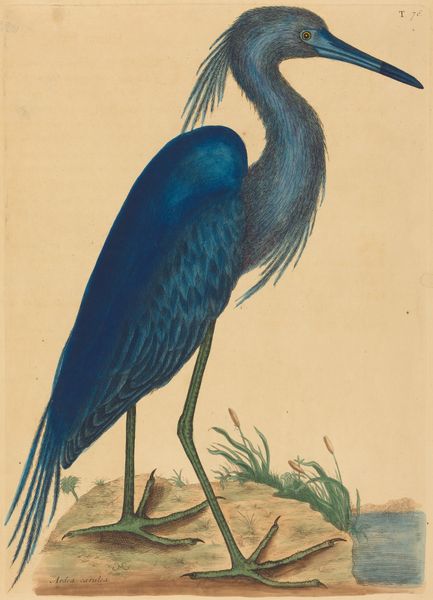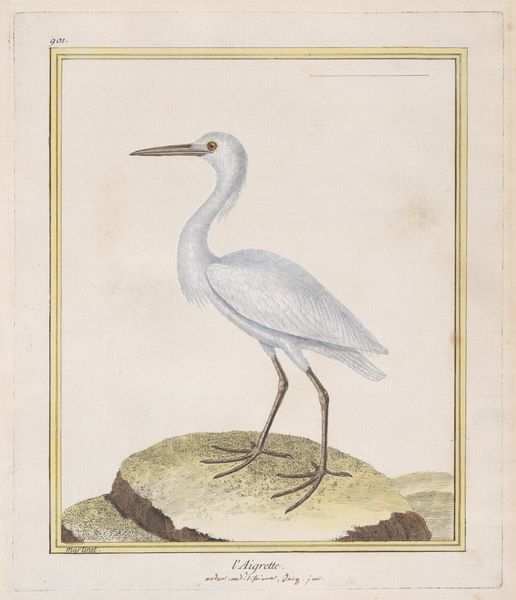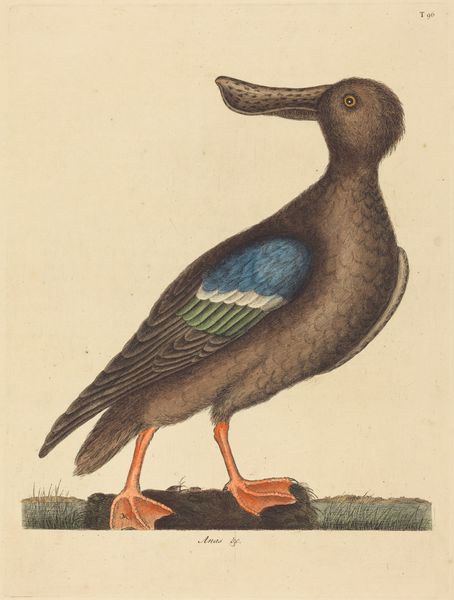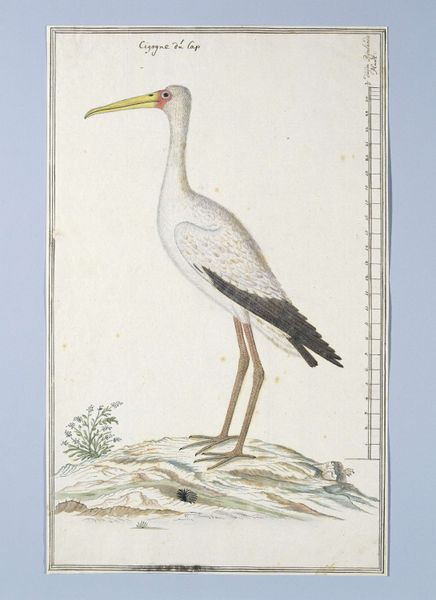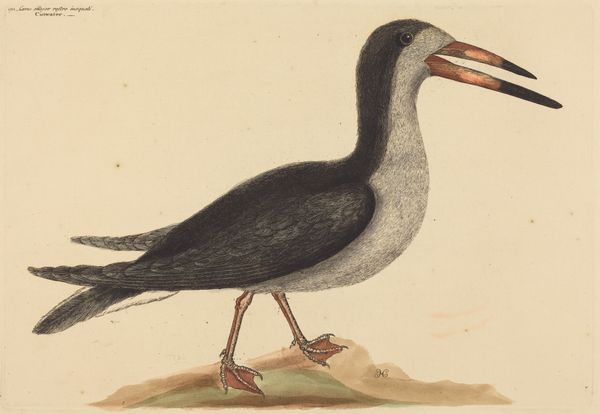
Courly à tête nu, du Cap de bonne Esperance (Bald Ibis from the Cape of Good Hope), from "Histoire Naturelle de Oiseaux" 1770 - 1786
0:00
0:00
drawing, coloured-pencil, print, watercolor
#
drawing
#
coloured-pencil
# print
#
landscape
#
figuration
#
watercolor
#
coloured pencil
#
history-painting
#
realism
Dimensions: Plate: 9 5/8 × 8 1/2 in. (24.4 × 21.6 cm) Sheet: 12 1/8 × 8 11/16 in. (30.8 × 22 cm)
Copyright: Public Domain
Curator: Here we have "Courly à tête nue, du Cap de bonne Esperance (Bald Ibis from the Cape of Good Hope), from "Histoire Naturelle de Oiseaux"", dating between 1770 and 1786, attributed to François Nicolas Martinet. The work is a print utilizing watercolor and coloured pencil, and it's currently held at the Metropolitan Museum of Art. Editor: Immediately, there's something so elegant and slightly melancholic about the starkness of the ibis against that creamy background. It’s like a portrait of dignified solitude, but maybe it's just me! Curator: Not at all. The visual impact lies in Martinet's exacting technique. Note the textures he achieves with watercolor and colored pencil to describe the plumage and the almost scientific precision in the depiction. Such prints played a vital role in disseminating knowledge of the natural world, fueled by the expansion of colonial interests and trade. This wasn't just art; it was data collection and visual record-keeping wrapped up in an aesthetic package for the European elite. Editor: Absolutely. And even though it's intended as a scientific record, I can't help but respond emotionally to the composition. The lean of the neck, that intense eye—it evokes a kind of vulnerable wisdom. Almost as if the bird knows more than it lets on about what we've taken from its land, doesn’t it? Curator: Indeed. While primarily concerned with representing factual details, Martinet was undeniably a product of his time. The labor involved in producing these images—the sourcing of materials, the division of tasks in printmaking—speaks volumes about 18th-century workshop practices and their dependence on global resources. Editor: It is pretty amazing when you think that such scientific studies demanded meticulous labor and precise resources that, even with all that in place, such "neutral" depictions like this one inevitably absorbed cultural and colonial viewpoints from back then, and passed down along these images for us now! Curator: Precisely! By looking closer at these works, beyond just their obvious visual appeal or supposed objective representation, we get a much richer understanding. Editor: Yes. Every observation reveals so much about ourselves, just as it seems to teach us a bit about the other life form in this picture. Thanks!
Comments
No comments
Be the first to comment and join the conversation on the ultimate creative platform.
